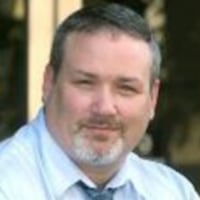NOTABLE VETERANS BURIED AT MIAMI CHAPEL CEMETERY
The last burial at Miami Chapel Cemetery was in the 1940s. The cemetery closed by 1950. Here are some of the notable veterans buried in the cemetery:
- Joseph Catterline (American Revolutionary War)
- Reuben T. Elkins (Civil War)
- John Huey (Civil War)
- James Johnson (Civil War)
- Thomas Dungan (Civil War)
Source: City of Fairfield
Motorists pass a piece of Butler County’s rich history every day most likely without realizing it, but some springtime improvements to the Miami Chapel Cemetery should draw attention to the final resting place of some of the area’s pioneer families and five American war veterans.
The city of Fairfield will seek proposals to construct a stone archway with stone pillars and a wrought iron fence to bring honor to a Revolutionary War and four Civil War veterans, as well as some of the area’s earliest settlers. The cemetery, which sits just a tenth of a mile south of One Way Farm and adjacent to several homes, is now surrounded by a rusted chain-link fence.
The cost for the improvements is expected to be around $30,000 and could take a couple weeks to complete after a contractor is chosen, said Jim Bell, Fairfield’s parks director.
“This is probably our second oldest cemetery in the city,” Bell said, and honoring the area’s early settlers and five war veterans is “the right thing to do.”
“It’s really honoring our past,” he said. “We’re saving it for the future generations so they can see that there is a lot of historical relevance to this cemetery.”
Miami Chapel Cemetery, named for a Methodist church that formed at the site, is one of more than 100 historic cemeteries in the county, said Tom Stander, a Butler County historian in Reily Twp. The oldest cemetery in Fairfield is the Symmes Burial Ground off Nilles Road near the YMCA.
The improvements to preserve and honor those interred at Miami Chapel Cemetery is important, Stander said. They lived in the areas known as Black Bottom and Fairplay.
“Within the city of Fairfield, you have really only two large pioneer cemeteries,” he said “Within (the Symmes and Miami Chapel) cemeteries you have basically the pioneer fathers and mothers of what is now the city of Fairfield.”
And Miami Chapel Cemetery “is really the only connection remaining to the mill communities, which are a piece of Fairfield history and basically the only link today to that piece of history.”
The cemetery operated for nearly 125 years, with its first burials happening around 1818 and its final burials occurring in the 1940s. In total, there are around 100 marked graves — and likely more than 50 unmarked graves — at Miami Chapel, which was known as Black Bottom Cemetery before a Methodist church was established and renamed it in the mid-1840s, said Stander, who’s great-great-great-great grandfather Joesph Catterline is buried there. He is the lone Revolutionary War officer buried in the city of Fairfield.
”He served with General (George) Washington at Valley Forge and served the entire period of the war and came to this area in 1805,” said Stander.
Stander said those in unmarked graves at the cemetery were relocated from the cemetery in Fairplay.
The Methodist church’s congregation began to suffer just a couple decades later as many of its members fought for the Union during the Civil War. Regular services ceased by 1876 and soon after the United Brethren established a church and many that attended Miami Chapel joined that congregation.
By 1912 the society had ceased to exist, and the little brick church that once stood adjacent to the cemetery was razed in the late 1920s.
The cemetery was closed to burials in 1950 by the Fairfield Twp. Board of Trustees when the city was still a part of the township. After the city incorporated in 1954 and became a city in 1955, Fairfield become the custodian of the closed cemetery, as mandated by the Ohio Revised Code.
But the American war veterans, and the age of the cemetery is not the only reason why the cemetery holds historical significance, said Stander. That includes cousins of Darrell Joyce, the longtime Hamilton schools superintendent for which Joyce Park is named, “and other families that … (were) pioneer families of the area that are buried here.”
"This area was relevant back 200 years ago," Bell said. "And that's something that is important today have that historical presence in the city."
About the Author
